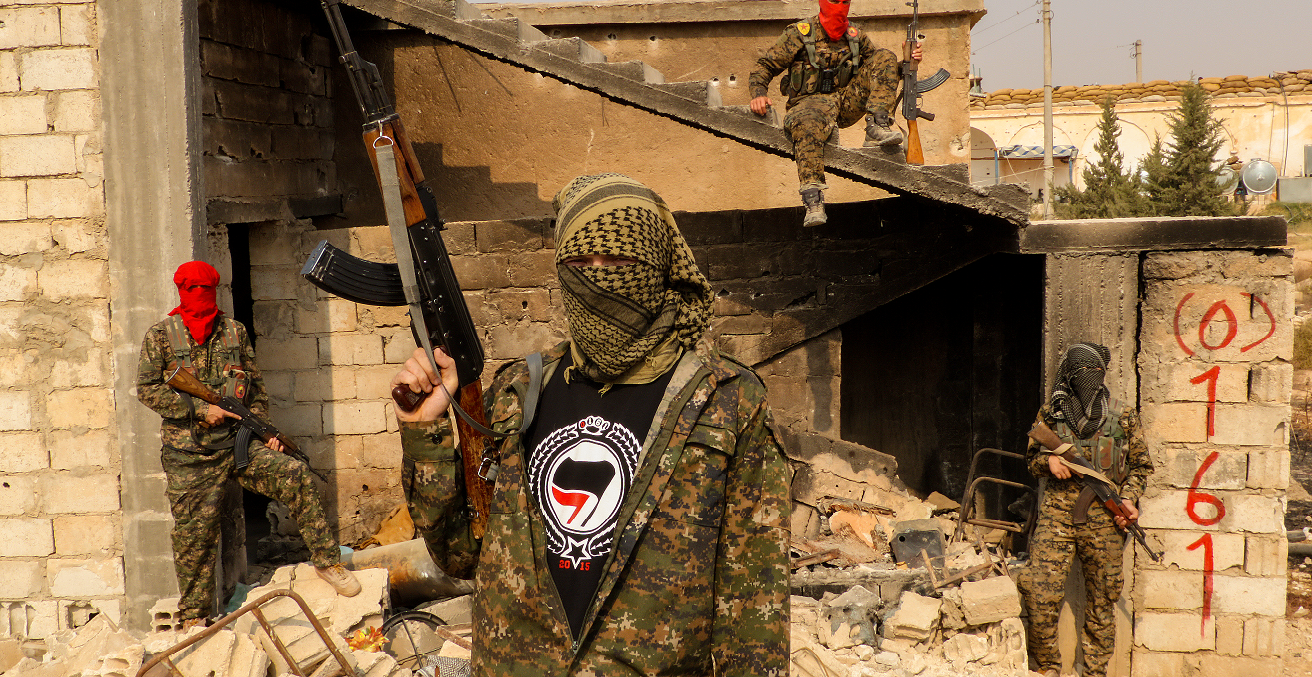Skin in the Game: A Radical Rethink of Conflict Resolution

Civil war is on the rise, as is the targeting of civilian populations and the use of authoritarian conflict management strategies. It is time for a radical rethink of conventional approaches to conflict resolution.
On 23 March 2020, UN Secretary General Antonio Guterres issued a call for a global ceasefire in order to help combat the spread of the COVID-19 pandemic. A variety of charities, religious organisations, human rights groups, and influential think tanks also put their considerable policy weight behind the call. The idea is relatively simple and follows conventional wisdom when it comes to conflict resolution: the ceasefire stops, or at the very least reduces, violence in conflict zones, thereby offering a chance for aid, humanitarian, and health services to access affected populations affected, or potentially affected, by the virus. Rather than focusing on the “sickness of war,” Guterres urges the world to come together and find our common humanity in the face of a shared enemy “that does not care about nationality or ethnicity, faction or faith. It attacks all, relentlessly.”
In theory, this all sounds like a lovely kum-ba-yah opportunity, logical and sensible. In the face of a pandemic which is fast eclipsing the Great Depression and World War II in terms of its global ramifications, calling on warring parties to halt violence while the world unites against a common enemy seems like it could be an easy win – a shared cause everyone can get behind.
However, this UN call for a global ceasefire has not gained meaningful traction or helped save lives. This deficiency is broadly indicative of a failure of most conventional methods of conflict resolution, which are in drastic need of a radical rethink. The primary reason for this is because their proponents, negotiators, and mediators largely have little to no skin in the game when it comes to the realities of war.
War does not knock politely on the door of a Syrian, Colombian, or Yemeni farmer, doctor, teacher or baker. It smashes it to smithereens. This means that who is most affected by war are not UN employees, American diplomats, members of the incumbent government, nor high level mediators such as Martin Griffiths, Geir Pedersen, or Julian Hottinger – UN Special Envoys for Yemen, Syria, and an expert advisor for negotiations in Sudan, Indonesia, and Uganda respectively. The reality is that these men (predominantly) sit in clean offices in New York and Geneva or hotels in Riyadh and Brussels, often for months at a time, with little to none of their own welfare on the line while civilians – largely children, women, and old men – pay with their lives.
The Known Knowns
The number of civil wars is on the rise. These wars are increasingly complex military/social/political affairs that deliberately target civilian populations through heavy-handed authoritarian conflict resolution methods. This conflict resolution strategy couples tactics such as siege and starvation with the targeting of medical facilities, schools, and breadlines in order to crush military and political opposition and impose a brutal victor’s peace on demoralised and defeated citizens.
To combat this shift in the way wars are being fought and won, conflict resolution efforts need to be driven by those whose needs are greatest, rather than dictated by political and military elites. For example, during high level negotiations regarding the conflict in Yemen, the release of political prisoners was seen through a conventional conflict resolution lens as way to build confidence and trust among the warring parties – with little success. However, female family members managed to secure the release of over 600 prisoners where high-level efforts had failed. The women were successful because they genuinely cared about the prisoners’ well-being – the detainees were their sons, brothers, fathers, and husbands. These women intimately understand the cultural context and the dynamics they are working in and they persisted on the issue, day in and day out, until they got results.
Likewise, the big, bold headlines about peace negotiations and agreements so often sought after by elites are not necessarily better when it comes to actually getting things done or helping people on the ground. In Afghanistan, attacks against humanitarian personnel, medical workers, and facilities have unfortunately been common, with little respite coming via international mediation efforts. From mid-April to mid-September 2019, the Taliban’s military commission restricted International Committee of the Red Cross and World Health Organization medical activities and withdrew its security guarantees for both organisations.
Despite this, unpublished and unpromoted “micro truces” have been agreed between local Taliban leaders and health professionals, enabling them to operate in Taliban controlled areas – treating civilians, including women, but also wounded Taliban fighters. In Yemen, quiet local-level conflict resolution initiatives are also seeing truces negotiated and the opening of humanitarian aid corridors. For instance, the civil society organisation Food4Humanity fixed a broken water station and negotiated a truce among conflicting villages. This enabled women and girls much easier daily access to potable water, as well as more time to attend a newly established local school.
The above examples are only possible because of the deep understanding of the people involved in these conflict resolution activities, and how the conflict affects cultural, political, social, and economic systems. In Colombia, the families of the over 120,000 people disappeared during the five decade long conflict advocated for a transitional justice system on this issue that was ultimately included in the peace agreement, based on their personal experiences.
On the other side of the coin, an understanding of local dynamics has allowed the Syrian regime of Bashar al-Assad to impose so-called “reconciliation agreements” on opposition-held communities. After areas such as Daraya and eastern Ghouta developed systems of rebel governance, the regime imposed ever-tightening sieges and increased bombardment of civilian populations. This led to resource scarcity which, in eastern Ghouta, brought about infighting between the different opposition groups as they vied for physical survival. Alternative systems of governance such as these were seen as a direct political challenge to the state and hence a threat to the survival of the Assad regime. Through its knowledge of local dynamics and pressure points, the regime was able to use brutal authoritarian conflict management strategies to undermine these alternative systems of governance, ultimately forcing opposition groups, pressured by suffering civilians, to surrender.
No good men among the living
In suggesting that calls for a global ceasefire and traditional conflict resolution methods may actually be counterproductive, I become a naysayer, one of those dreaded kill-joys you sometimes have the unfortunate experience to sit next to at dinner parties. There are powerful forces at work that prevent criticism of supposedly humanitarian activities. When actions are unquestioningly considered benevolent and positive they are usually regarded as benign. This obscures their more political (or even perverse) motivations or consequences.
The conventional cookie-cutter approach to conflict resolution is one which overwhelmingly sees male military and political elites negotiate, with the assistance of a male international mediator, about issues none of them are deeply connected with, have personal experience of, or have genuine rapport for. It is more of an exercise in vanity than it is about helping the people war most affects. Continuing in this vein, with all the information we have to hand about its inefficacy, at best is misguided and at worst, dangerous.
This particular moment in time offers a once-in-a-generation opportunity to rethink and redesign negotiation and ceasefire processes in order to reframe debates. We need to talk about what constitutes the success of conflict resolution, who is involved, and what a ceasefire or peace agreement should contain. Peace is not a technical solution. It requires that the powerful and the privileged exercise their responsibility to put humanity upfront. We need to pass the microphone and become a supportive shoulder to exhausted locals. In this way, out of this moment of global trauma could come something new, and hopefully improved.
Dr Marika Sosnowski is an Australian qualified lawyer and currently a research associate with the German Institute for Global and Area Studies in Hamburg (GIGA). Her primary research interests are in the fields of critical security studies, complex political order, local/rebel governance and legal systems. Her geographical area of focus is the Middle East, particularly Syria. @MikiSosnowski.
This article is published under a Creative Commons License and may be republished with attribution.





